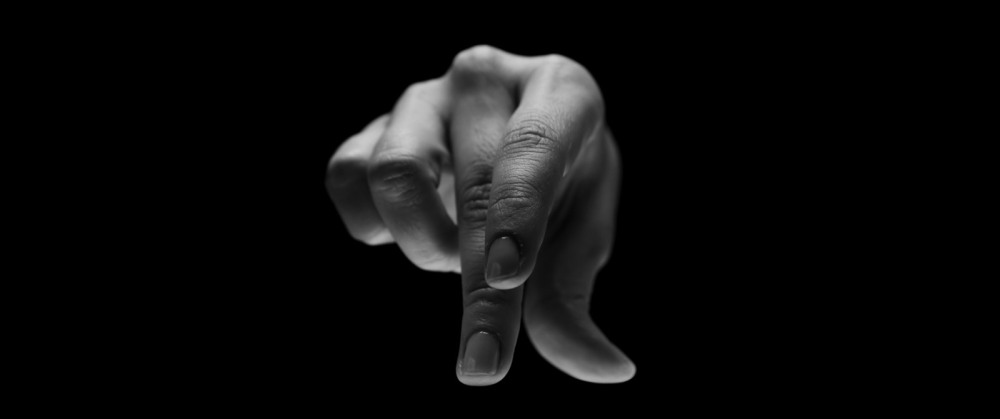
Pretentious, groundbreaking, fascinating, dreadful, gorgeous, bland, tiresome, engrossing; these are all words that could be heard while describing practically any art film, but Godfrey Reggio’s work in particular is a beast that’s criticized and praised equally and often. In fact, as I was captivated by some rather beautiful black-and-white photography in his latest film Visitors, I overheard a couple just a few seats away mumble, “I think I’ve seen enough,” before walking out. This was just under an hour into the film. Remaining seated right until the last bit of credit dissolved into white light, I was a little frustrated by their action. And yet, I get it. Reggio’s films, be it this or the Qatsi Trilogy, are as divisive as documentaries get. If the thought of long close-ups, 74 shots making up a nearly-90 minute feature, zero dialogue, and contemplative images with a lingering, unsubtle message unsettles you, move on; there’s likely nothing in Visitors for you. For everyone else, take a seat and let it all wash over you.
To quickly summarize the film without doing it a horrible disservice, Visitors is a wordless series of shots dedicated to exploring humanity’s presence on Earth. If that sounds like an immense, potentially aimless thing for a film to try and grasp at, it’s because it is. But thankfully, that doesn’t make it any less stunning to experience. And that’s what it does above all else: offer an interesting and unfamiliar experience. In many ways, it’s similar to what one might find while walking through a contemporary art museum if the entire thing were filled with the simplest of works by Reggio and a team of cinematographers — Graham Berry, Trish Govoni, and Tom Lowe (the first of whom actually worked on Powaqqatsi with the director).
A documentary this ambitious is rare nowadays, but not entirely unheard of. Even something like Samsara, directed by Koyaanisqatsi cinematographer Ron Fricke, took an immensely different route to presenting a view into humanity and culture. Where that color-filled work traverses twenty-five countries over five years in an attempt to capture the wonders of the world in the most warm and familiar way possible, Visitors strives to alienate us form the humans and landscapes it presents. The life is sucked right out of every image through the black and white, serving to enhance the already haunting atmosphere that Philip Glass’ score offers. And lifeless images they are, even though they — more often than not — present life at its simplest.
Each shot looks painstakingly composed, their lighting especially, those of the humans involved drenching their faces in white light, making them the only figures in a world of darkness. If Reggio’s claims of the film being an exploration of how humans are affected by technology — a theme vaguely looked into in Naqoyqatsi over a decade ago — are to be taken wholeheartedly, one can claim that the light that reveals only these faces is that of a computer screen. That almost fluorescent glow that makes a person’s face shine in the darkness, whether they’re laughing at a good blog post, feeling their world turned upside-down by something they read, or simply staring like a zombie, their trance-like states only betrayed by the slightest facial movements. This theme is only further pushed by a couple of shots that focus on the hands of those being filmed interacting with technology. Watching hands typing or scrolling on a laptop’s touchpad is a much more, pardon the pun, heavy-handed approach to delivering that message, and yet still far from the least subtle.
Subtlety isn’t exactly what these documentaries tend to go for though, as the Qatsi Trilogy and Fricke’s solo work all have a very overbearing quality to them. The heavy humanist feel of something like Powaqqatsi is betrayed here, as Godfrey Reggio spends an abundance of time making everyone watching feel as out of place as possible. The notion that we are all “visitors” on this Earth is pushed every single minute, with time-lapse shots of buildings, empty amusement parks, natural landscapes, a couple of animals; they all work to emphasize the impact that humans have made to the world. They all fade in and out, the occasional jarring cut serving to juxtapose two images in the best of ways; a slow panning shot of trees that have likely been alive for centuries cutting to a series of mausoleums to provide a particularly impacting example. But where some shots achieve greatness, others prove to be immensely frustrating. Watching mounds of trash falling for what felt like minutes, but was probably only just above sixty seconds, rings like a good punch to the face might. A scene that depicts the director’s message so blatantly doesn’t come often, but when it does, it moves Visitors from entrancing to downright boring.
There’s a chance I offer Reggio some lenience because watching Koyaanisqatsi really changed my perspective of what documentary cinema could really provide years ago. One could easily argue that the director himself doesn’t entirely know what he’s trying to say with Visitors, but even then, the film challenges one to find their own interpretation of the images on screen. Even the camera pulling back in its final moments to reveal an audience watching the film that’s just played before fading to white feels like a reminder of that call to challenge what one’s seen. It may prove a daunting and ultimately pointless experience for some, but its ambition and gorgeous look and music make it something worth experiencing.
—
Visitors is currently available on Blu-ray/DVD Combo and for purchase or rental through Amazon Instant Video
.
Directed by Godfrey Reggio; written by Godfrey Reggio; 87 minutes.



 Derek
Derek
 Isabelle
Isabelle